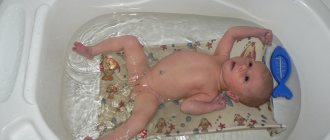The struggle with excess weight is a familiar situation for many women after childbirth. Someone is trying to lose weight with a diet, some mothers manage to go to the gym. And there is a certain category of women who want to lose weight, combining business with pleasure, and choosing daily jogging in the fresh air. But there are a number of questions that concern young mothers who want to lose weight through running - how safe is running while breastfeeding and how does it affect lactation?
You can run while breastfeeding by following simple rules and having fun.
When to start playing sports?
According to most experts, minor physical activity is allowed almost the very next day after the baby is born. Light exercises will not only do no harm, but will also help tone your abdominal muscles as quickly as possible. Of course, all this can only be said about healthy women whose birth took place without problems or complications.
In cases where a caesarean section was performed, ruptures occurred during childbirth, there is a risk of sutures coming apart and bleeding from physical exertion. It's better to wait a few months than to have health problems. In any case, before starting sports, it is advisable to consult with your gynecologist - only he will be able to competently assess the general condition of the mother and give her the right recommendations.
After a caesarean section, a woman will have to wait several months before starting her usual physical activities.
How to exercise correctly?
The most important principle is that physical exercise should bring pleasure and joy to the nursing mother.
When playing sports during the breastfeeding period, you should adhere to several rules and principles:
- You should not pay much attention to strength sports, because after childbirth it is more important to get rid of excess weight, achieve muscle tone and restore body elasticity, and not to gain muscle mass;
- It’s better to start getting your body in shape with exercises on the abdominal muscles, since during pregnancy they become flabby and stretched, besides, this will help reduce the load on the lower back, and the uterus will be able to quickly contract and return to its previous size;
- after a couple of weeks of training, you can increase the load on the abdominal muscles, as well as add bends and turns of the torso, squats;
- physical activity promotes the production of lactic acid by the muscles, and when it gets into the milk, it changes its taste properties not for the better, which is why the baby may completely refuse such food. To avoid such a situation, experts recommend that young mothers engage in sports immediately after breastfeeding or 1.5 hours before;
- During active physical activity, the body loses a lot of fluid, the deficiency of which is dangerous because the production of breast milk can be greatly reduced, so you should definitely pay attention to your drinking regime, you must consume a sufficient amount of clean water during training, drinking in small sips no more than 100 ml per day. once.
Is it possible to run after giving birth?
Before starting cardio after childbirth, it is important to pay attention to the following contraindications:
- Congenital heart diseases;
- Hypertension;
- Tachycardia;
- Arrhythmia;
- Chronic joint diseases;
- Flat feet;
- Anemia;
- Thrombophlebitis of the legs.
Pros and cons
Running has a number of pros and cons.
Minuses:
- Joint injuries.
- Load on the spine and muscles, which are already weakened.
All this can be easily avoided with an adequate approach to training.
Pros:
- Losing weight and increasing overall tone. It is important to combine exercise with proper and healthy nutrition. Otherwise there will be no effect.
- Improving blood circulation and metabolism helps reduce swelling and avoid acne. The skin becomes firmer and more elastic.
- Sound and healthy sleep.
- Prevention of depressive disorders.
Running and breastfeeding
- Milk may change taste or disappear. May occur in professional athletes due to the level of stress.
- The baby will begin to refuse on his own due to the smell of sweat. This is his mother's natural scent. On the contrary, T-shirts are provided for the child if he needs to go somewhere. Feeling the smell of his mother, he feels safe.
- 10 minutes of running is enough. This time is negligible. You need to exercise for at least 20-30 minutes at a good heart rate.
- It is better to train between 11 a.m. and 1 p.m., because the body is at its peak of activity. This myth has not been scientifically proven.
We need to remember simple truths:
- Selection of clothes and linen for classes. The girl should be comfortable. Freedom of movement is important, but the breasts must be supported.
- There is no need to chase marathon results. You can start by walking.
- During lactation, it is important to drink a lot during and after exercise to restore lost moisture.
Approach to classes
Girls who have not trained before can start with walking. Then move on to running and more serious activities.
Types of running:
- Slow pace - jogging.
- Fast pace and short distance - sprint.
- Fartlek combines the previous types of running. It's about changing the pace.
Classes
It is better for any girl to start as if she is a beginner. Even if the level of her preparation before giving birth was impressive. This way she will gradually get into the rhythm without injuring herself. At the initial stage, fast walking and slow running are used. The load increases gradually.
It is important to pay attention to the body's signals. If you experience discomfort in the legs, chest or abdominal area, it is better to stop training for 2-3 days. A rise in temperature and weakness for more than an hour indicates that the body is not ready.
Exercising helps produce “happiness hormones”. Therefore, pay attention to sleep and nutrition. If they are deficient, the body will begin to activate already depleted reserves. It won't be long before apathy and bad mood arise. Family health comes first and only then training.
Choosing the optimal type
In an effort to lose weight, a woman during the postpartum period must choose what kind of sport she wants to engage in. To find a suitable option for yourself, you should study the effects of different techniques on the body, their pros and cons:
- Walking. Its advantage is that it is the simplest and most economical option for an accomplished mother. When walking with a child in a stroller, you need to walk quickly and rhythmically and cover long distances. Combining business and pleasure, a woman does not need to devote time to exercise. When choosing this type of exercise, it is important to use comfortable shoes and clothing. Walking strengthens leg muscles and promotes breathing without affecting the abdominal muscles, where excess fat accumulates. They are beneficial for the body in general, but the results will not be noticeable immediately.
- Run. This type of exercise helps you lose weight and improve muscle tone. Jogging during breastfeeding is not recommended by experts, as it exposes the breasts to unnecessary vibrations. This same group of exercises includes jumping. It is also better to refuse them. You should not run while breastfeeding, as the likelihood of breast injury increases.
- Fitness. The benefits of this activity include the ability to train at home. Disadvantages include the need to create an individual program of moderate intensity.
- Yoga. Performing simple asanas at home does not require special knowledge or effort. These exercises have a beneficial effect on muscle tone, mood, and thoughts. The genius of these exercises is that they engage every muscle in the body. Proper breathing saturates the body's cells with oxygen.
- Power loads. Visiting the gym, training with dumbbells or barbells on special machines are not advisable during breastfeeding. This is due to the production of adrenaline during such activities.
- Aerobics. It includes a set of active exercises that promote weight loss and increase muscle tone. It is possible to practice during breastfeeding, but very carefully.
Any of the exercises presented has a positive effect on the body. But when choosing, you need to take into account your physiological characteristics, age, level of difficulty, etc. It is equally important to train in a good mood.
Is it possible to run while breastfeeding?
The struggle with excess weight is a familiar situation for many women after childbirth. Someone is trying to lose weight with a diet, some mothers manage to go to the gym. And there is a certain category of women who want to lose weight, combining business with pleasure, and choosing daily jogging in the fresh air. But there are a number of questions that concern young mothers who want to lose weight through running - how safe is running while breastfeeding and how does it affect lactation?
What are the benefits of running?
First of all, a short run is an active fight against calories. A moderate thirty-minute run burns about 500 calories. In addition, running has a positive effect on the body in the following ways:
- Distribution of the load across all muscle groups.
- Normalization of blood circulation.
- Active physical activity accelerates the production of endorphins, while preventing the formation of the hormone cortisol, which is responsible for stress and anxiety.
- Restoring sleep patterns.
- Increased performance.
- Boosting immunity.
- Increase in the volume of the heart chambers.
- Stabilization of blood pressure.
- Strengthening bone tissue.
After the birth of a child, a certain part of women have a catastrophic lack of time for themselves and getting their bodies in order. Jogging allows them, at least for a short time, to escape from the usual hustle and bustle, thereby improving their mood and getting rid of stress.
Contraindications for jogging
As you know, pregnancy and lactation are not diseases. Therefore, contraindications for running for nursing women include all those that apply to the average person:
- joint diseases, including arthritis;
- development of flat feet or a pronounced position of the legs when the feet “fall” inward;
- problems with blood circulation;
- mitral stenosis;
- disturbances in the functioning of the heart and heart rhythm;
- congenital disease - heart defect;
- thrombophlebitis in the lower extremities.
And you can add to this list periods when intense exercise and running are undesirable:
- The period before the child is three months old, and only if the mother actively ran before pregnancy.
- The first six months after giving birth, if the woman has not been friends with sports before.
- If the baby was born by caesarean section, then you must wait until the suture is completely healed.
- Breastfeeding period.
Running for women who do not breastfeed: when to start, how much and how to run
We are talking about mothers who have already endured the required months after childbirth, have completed breastfeeding, or no longer want/cannot feed the child. Then you can start training on any convenient day.
During the day, it is most beneficial to start running between 11 a.m. and 1 p.m. This is the time when the body is more resilient and can most easily cope with the load. But quite often, caring mothers can only go for a run in the evening, because during the day they have housework and care for the baby. This also has its own truth: firstly, you can leave the child with relatives who come home from work and find a little more time for yourself. And secondly, by going for a run, a losing weight mother will deny herself the pleasure of eating an extra pie and spend time usefully.
In a situation where a woman chooses running for the first time in her life to lose weight, it is worth listening to some advice:
- There is no need to load the body as much as possible from the very beginning and try to “jump over your head.” An unprepared body can respond differently to increased stress, and it is possible that poor health will forever discourage a woman from going jogging. During the first sessions (for a beginner this is about 20 minutes), you need to walk quickly, then switch to jogging and only at the end of the run increase the pace. But in any case, you should not extend the workout longer than 40 minutes.
- Your weight and figure will not change immediately when running; you shouldn’t be afraid of this and quit exercising without waiting for the results. At first, the lost kilograms will be noticeable on the face, and only then on the butt and hips.
- In everything you need to know when to stop. Don't try to do double volume today so you don't have to run tomorrow. This is harmful to the body, it is better to exercise a little, but every day.
- Significant results will be noticeable if you maintain proper nutrition when running. You can't go on a protein diet. But you can lean on carbohydrate-containing foods: whole grain bread, cereals, dried fruits. At the same time, it is better to eat such ingredients before training, about an hour. But after training it is better not to eat, at least for the first one and a half to two hours. You can drink as much as you like during this time.
- To properly distribute the load, you need to buy special running shoes. Sneakers are selected taking into account the area where jogging takes place - forest, sidewalk or embankment.
How to determine the loads?
Women who do not fit the list of contraindications and can afford regular jogging need to decide on the permissible loads and schedule. Speaking about the latter, you need to understand that no one will stop you from forming your own regime. If you are a conscious morning person and cannot lie in bed for a long time, then it makes sense to get up twenty minutes early to take advantage of the morning rush of energy , but otherwise there is no need to mock yourself - everything has its time.
Early morning runs are good for a variety of reasons. They perfectly awaken the body, relieve the senses and give a chance to enjoy nature - in the early hours the leaves rustle more clearly, and the cool air is not filled with car horns. Daytime also has its advantages - the body can more easily tolerate significant loads, because it is ready for them. And for those mothers who sit with their babies all day long, unable to leave, the evening hours remain - a real training of willpower. Only the most motivated women will be able to give up a late-night snack in favor of running, but in the end they will gain more than most.
Running while breastfeeding
The main reason why running and breastfeeding are not compatible is the impact of too much stress on milk production. If you exercise too actively, you may experience:
- change in the taste of breast milk - occurs due to the active production of lactic acid in the muscles;
- reduction in milk production;
- lactostasis;
- hypertonicity of the uterus;
- uterine bleeding.
But it cannot be said that running is completely contraindicated for breastfeeding women.
By following the basic rules, young mothers can sometimes replace training with a short run. These include:
- The first workout should be fairly slow and no more than 10 minutes. For starters, you can start walking. And in the future, gradually increase the load and increase the duration of the workout to 30 minutes, no more.
- Drink plenty of fluids while jogging.
- You shouldn’t take a cold shower while on guard, so after training you can only rinse with warm water.
- Immediately before training, it is worth feeding the baby, since the next feeding can be done only an hour and a half after training.
- When organizing training, it is important to think about clothing, since underwear should not put pressure on the chest, and the elastic band of sports trousers should not put pressure on the stomach.
If even with minimal physical activity nursing mothers manage to lose extra pounds and feel much lighter, you should not think that increasing the load will lead to an even greater effect. As a rule, this can only lead to a deterioration in lactation, but at the same time it can be a temporary phenomenon. Therefore, if such a situation is noticed, the woman needs:
- Reduce activity to original level.
- Eat and drink more ingredients that are aimed at increasing lactation - these are cheeses, cottage cheese, milk, nuts, drinks made from cumin, dill, anise.
- Maintain a drinking regime, and drink even more during training.
Frozen milk supplies will also come in handy in this case. Until lactation is restored, you can supplement your baby with thawed milk from a bottle. Such reserves can be stored for quite a long time - exactly two months.
Recommendations for safe training during lactation
When devoting time to sports training, it is important to remember safety precautions and be careful during exercise. In order not to harm yourself and to ensure that your baby receives a sufficient amount of milk, you should follow simple recommendations:
- A nursing mother should not be overtired. As soon as the body is exhausted and exhausted, the body will begin to produce adrenaline, which can affect milk production. Train in moderation, don't torture yourself.
- Loads must be increased gradually. You should start with simple movements; the initial training time should be no more than 10 minutes. When the body adapts, increase the intensity and duration of training. It is better to discuss how many approaches are needed to maintain shape and the duration of their implementation with a specialist individually: trainer, consultant.
- Don't forget about warming up. Before training, perform warm-up movements, stretch your muscles, and stretch your joints. Such actions will prevent injury while performing basic exercises.
- During exercise, do not forget to restore your drinking balance. After training, replenish lost fluids for several hours. For this, still water or dried fruit compote are suitable.
- Do all exercises at a calm rhythm. Poorly structured exercises will not bring results and can lead to injury.
- Focus on the abdominal muscles, then include activities to strengthen the spine and back, chest and only then the legs.
It is worth noting that some disorders of the body are prohibitive in nature for starting sports activities. In addition, the period of pregnancy and childbirth is a great stress for a woman, when old diseases worsen. Therefore, before starting training, it is necessary to consult a doctor: only a specialist can allow or prohibit this or that type of vigorous activity.
You cannot exclude sport from a woman’s life, especially if it gives her pleasure. Having a baby takes up a lot of time and women sometimes forget about their appearance. Today, physical education is popular, which a mother can do together with her baby: it is not only about maintaining good shape, but also a lot of positive emotions. In addition, children enjoy activities with their mother. Physical activity is important if you approach the training carefully and thoughtfully. Sports activities improve your appearance, improve your mood, give you vigor and health.
How to return to running after childbirth, and can a nursing mother run?
There are a lot of myths and ambiguous information on this issue on the Internet, including some that are not substantiated. To find out, we found research and learned about the experiences of running moms.
The birth of a child is a long-awaited moment in a woman’s life. With a storm of emotions and love, a new stage begins, and the usual things fade into the background. Among them are sports, for which there is often simply not enough time.
But many of us still think about physical activity and wonder when we can resume exercise (in our case, running) after childbirth, and whether it is compatible with breastfeeding.
An alternative to running during guards
If for some reason a young mother cannot afford to run, you can replace the training with other exercises allowed under guard. It can be:
- Yoga - with the help of a set of exercises for beginners, you can stabilize blood pressure, protect the body from heart disease, and restore sleep. Yoga, unlike running, can be practiced within 40 days from the date of birth.
- Swimming helps you lose weight, strengthens and restores muscles. But a nursing mother will also be able to go to the pool for the first time three months after giving birth.
- Walking is the safest form of physical activity and is allowed for absolutely everyone. A nursing mother can walk with her baby or with a stroller.
- Pilates - actively works on the back muscles, posture, increases endurance, improves agility, flexibility and strength. But you can start classes only after four months from the birth of the baby.
If you follow simple rules, women who are breastfeeding can also run. After all, this is not only the simplest sport, but also a fairly effective method of losing weight. In addition to physical activity, running involves the development and strengthening of almost all body systems and health in general.
Exercises
Think over a training program for yourself, what activities should be included in the complex. Don't choose moves that are too difficult. A few basic techniques will be enough to achieve visible results in just a couple of months. Recommended components of training for nursing include a number of methods aimed at restoring the figure:
- Charger. It's best to start the day with exercise. Five minutes of light exercise will charge you with energy, give you a feeling of lightness, wake up your body, and tone your muscles. Stretch, squat, swing your legs and arms.
- Abdominal exercises. The famous crunches strengthen the abdominal wall, which needs to regain its elasticity after pregnancy and childbirth. It is important to pump up your abs correctly. To perform this, you need to lie on the floor, fix your legs, hands behind your head, and your back is rounded. Raise your body to your feet, don’t forget to breathe correctly. Perform 2-3 sets of 12-15 reps.
- Breathing techniques. It has been proven that oxygen oxidizes fat cells and dissolves them. Therefore, proper breathing promotes weight loss. Popular oxygen-saturating techniques include bodyflex, oxysize, jianfei, etc.
- Squats. Buttocks and legs are problem areas for women due to the physiological characteristics of their body structure. You can remove extra centimeters using squats. To do this, grab the support with your hand and place your feet shoulder-width apart. You need to squat until your pelvis reaches a position parallel to the floor. We don’t bend our back. We do 2 sets of 20 times.
- Swing your arms. The classic “mill” exercise perfectly strengthens the muscles of the back, arms and chest, tones the muscles, and accelerates the blood. Stand straight, feet slightly wider than shoulder height, arms at your sides. When bending over, try to touch the toe of your left foot with your right hand, and your right lower limb with your left hand. We perform swings one by one, creating the effect of a mill.
How long after giving birth can you run while breastfeeding and after lactation ends?
Weight gain during pregnancy is considered an absolutely natural phenomenon. It is equally natural for women to want to quickly lose excess weight when pregnancy is over. And then natural questions arise: how long should you wait after giving birth so that running doesn’t cause harm, and is it necessary to wait at all? How will running affect lactation? In this article we will consider both cases: jogging in the postpartum period for nursing mothers and for mothers who are not breastfeeding or have completed breastfeeding.
What to consider when deciding to start running training
When thinking about resuming jogging, you should first visit a gynecologist. Only a specialist, after conducting the necessary examinations, can make an informed decision about the admissibility of physical activity. Despite the fact that every woman feels her body, invisible processes can occur in it that prevent running.
The main principle in this matter is trust, but verify. It’s better to get checked once than to later face the negative consequences of a rash decision. In addition, a woman who gives birth to a child is, first of all, a mother, who is now responsible not only for her own life, but also for the life of the baby. In this regard, it is necessary to eliminate possible unjustified risks or reduce the likelihood of their occurrence.
The benefits of running
The benefits of an active lifestyle after childbirth are obvious. Just 30 minutes of fast running will burn 500 kcal, accelerating the achievement of an ideal figure.
- loads all muscle groups;
- accelerates blood circulation;
- reduces the synthesis of the “stress hormone” (cortisol), while at the same time efforts to produce “hormones of happiness” (endorphins);
- normalizes sleep;
- increases performance;
- strengthens the immune system;
- increases the volume of the heart chambers;
- equalizes blood pressure;
- increases bone density.
Contraindications for running
Doctors identify a number of contraindications to running that are common to all people. Among them:
- arthritis and other diseases of the knee or hip joints;
- flat feet or a tendency to roll the feet inward;
- circulatory failure;
- mitral stenosis;
- severe heart rhythm disturbances;
- Congenital heart defect;
- thrombophlebitis of the lower extremities;
And, most importantly for the purposes of this article, intense running is extremely undesirable:
- in the first 2-3 months after childbirth, if the woman had already practiced jogging before pregnancy;
- in the first 6 months after childbirth, if the woman led a sedentary lifestyle;
- after cesarean section until the scar is completely healed;
- nursing mothers.
In the latter, strong physical activity can lead to a decrease in the amount of milk or its complete disappearance. Also, in most cases, milk acquires an unpleasant taste, as a result of which the child may refuse breastfeeding.
What examinations need to be done before starting jogging: expert opinion
M.V. says Timofeeva, practicing doctor of the highest category, obstetrician-gynecologist, gynecologist-endocrinologist, reproductive specialist, ultrasound diagnostics doctor, founder of the antenatal clinic Femina33 LLC.
“In the first year after childbirth, women need to visit a gynecologist as needed, but at least once every 6 months.
Mandatory examinations
Women, especially those who want to run, need to visit a gynecologist 6-8 weeks after birth for an examination, have an ultrasound of the pelvic organs and microscopy (smear analysis). An ultrasound examination allows you to assess the condition of the pelvic and uterine organs, which is especially important during a cesarean section, to detect possible internal disorders (with a cesarean section, in particular, the condition of the sutures), which can lead to postpartum complications.
Microscopy is carried out to analyze the state of the microflora and epithelial cells of the vagina, the internal mucous membrane of the uterine body, endometrium, and cervical canal. This study makes it possible to determine the hormonal level of the reproductive system, the amount and composition of vaginal discharge, the bacterial content of microflora, prevent inflammatory processes, identify developmental pathologies, the presence of neoplasms and infections.
Additional examinations
Since running is an additional physical activity that, in addition to its benefits, carries the risk of adverse consequences, especially after childbirth, it is also advisable to take a general blood and urine test, as well as do a duplex scan of the veins of the lower extremities (ultrasound). A blood and urine test allows you to assess the general condition of the body, identify the inflammatory process and other deviations from the norm.
Ultrasound of the veins makes it possible to assess the condition of the venous system and exclude vascular obstruction due to blood clots. The fact is that in pregnant women the level of blood clotting increases 9 times, which persists in the postpartum period for 6-8 weeks. And running puts additional stress on the venous system, increasing the risk of thrombosis.”
Jogging for non-breastfeeding mothers: when to start and how much to run
If the required 2-3 months after childbirth are already behind you, and the woman does not plan to breastfeed or has completed breastfeeding, you can safely start daily jogging.
Biorhythmology considers the optimal time for physical activity to be from 11:00 to 13:00, when the body is best tuned to developing endurance. Although deprived of this advantage, evening jogging still has one advantage.
Evening is the most “dangerous” time for women losing weight. It is late in the evening that mothers, having snatched some free time, can break loose and, while sitting in front of the TV, snack on something tasty, low-health and high-calorie. Having replaced this snack that the body does not need with a half-hour run, the woman, upon returning home, will most likely take a shower and go to bed.
If a woman has previously been far from sports and is starting to run for the first time in her life, she will need a few easy-to-follow tips:
- You should not try to break world records from the very first lessons. Overexertion of an unprepared body can turn a person away from physical activity forever. You need to start with a quick walk, then switch to jogging and at the end of the run, speed up at your discretion. The optimal training duration for a beginner is 20 minutes, the maximum is 40.
- You shouldn’t get upset and quit training because of slow progress. As a rule, the chest and face are the first to lose weight, and only with continued exercise do the buttocks and thighs begin to become slimmer.
- Both overwork and laziness are equally harmful. You can’t “run half an hour more today and not exercise at all tomorrow,” which is what many beginners love so much.
- Only when “refueled” with suitable “fuel” will jogging be enjoyable. Protein diets are unacceptable. Such an energy-intensive process as running requires an abundance of carbohydrates: whole grain bread, cereals, dried fruits. It is better to eat a high-carbohydrate product an hour before jogging. After training, it is advisable not to eat for at least an hour and a half, but you can drink plenty.
- It is absolutely necessary to purchase good running shoes, selected taking into account your usual route: sidewalk, forest path or seashore.
What should you keep in mind?
When going for a run for the first time after giving birth, you need to follow the basic rules :
- Don't try to break all the records and run the maximum distance. Running after childbirth should bring joy, and not become a burden, so start small - first walk quickly, then start jogging, and only increase speed over time. Doctors recommend that women who have given birth exercise no more than forty minutes in the first few days.
- Don't reward your laziness, but try not to overdo it. While it's admirable to want to lose weight after having a baby, there's no point in stepping on the scale right after a run. Take situations realistically and prepare for the fact that the fat will not go away in the first couple of months.
- Always remember food as fuel for your body. Food should provide you with all the necessary components, so do not limit your carbohydrate intake - they are very important for women who have gone through childbirth.
- Do not eat for a while after training (at least an hour and a half), but drink as much as you like !
Always evaluate how you are feeling and do not ignore simple fatigue tests. As you run the next lap, try to talk out loud to yourself and, if the process is difficult, slow down the pace.
Running for nursing mothers
The reason that nursing mothers are placed in a separate category is the effect of intense physical activity on lactation and, in general, on the body of a woman who has recently given birth. Excessive exercise can lead to:
- the appearance of an unpleasant taste in milk (the reason is the abundant secretion of lactic acid formed in the muscles);
- decrease in milk volume;
- lactostasis;
- hypertonicity of the uterus;
- uterine bleeding.
Nevertheless, running is not an absolute contraindication during breastfeeding and, with some reservations, is sometimes included in training complexes for nursing mothers.
Here are the main conditions:
- The duration of the first workouts should be 10 minutes, and they should take place at a minimum pace (race walking is also suitable). Subsequently, the jogging time can be increased, but half an hour is considered the maximum for a nursing mother.
- During training, you need to drink a lot.
- You will have to refuse a cold shower after a run - only warm showers are allowed.
- You should feed your baby right before training. After a run, you need to wait at least an hour and a half before the next feeding.
- Careful selection of clothing is required. Sweatpants should not squeeze your stomach, and your bra should not squeeze your chest.
A common situation is when a nursing mother, inspired by the first progress in losing weight, sharply increases the load. This naturally leads to a deterioration in lactation - fortunately, temporary. In this case you should:
- immediately reduce the intensity of your runs;
- introduce into the diet foods that enhance lactation (milk, cottage cheese, hard cheese, nuts; decoctions of dill, fennel, cumin or anise seeds);
- increase the amount of fluid you drink.
Also, some nursing mothers who do not want to give up sports make a reserve supply of expressed milk. Once frozen, it can be stored without changing its properties for about two months. If lactation weakens, the mother can use stored milk while she restores milk production.
Personal experience of mothers
Sveta Didukh
I resumed training 1.5 months after giving birth. I ran until the 37th week of pregnancy, but despite this, the first workout was quite difficult. I ran 6 km at once, but at a very slow pace.
I try to run three times a week. Thank you for having someone to look after the baby. After a month of regular jogging, I connected a training plan that was written for beginners from the KMRC club. There is definitely progress, but we still need to get into shape.
Training has had only a positive effect on my breastfeeding. I don’t know if it’s a coincidence or because of the training, but my lactation has improved, although before that I had some problems.
I try to remember to drink more, but this is also not an indicator, as it turns out from experience. Milk always comes, regardless of whether there was a workout or not, and sometimes even more than I expected.
My daughter refused to eat only once, but a quick shower fixed everything. Perhaps the exercise was more intense and the day was hotter that day, which led to more sweating. Although there were days when she ate immediately after training, and I did not have time to immediately go to the shower. Once I had to feed after the competition: all I did was wipe my breasts with a damp cloth. Running is my place of relaxation, which I treasure very much.
Yulia Pozharuk
Training began as soon as the child was one month old. I felt great, considering the constant lack of sleep, but my energy was almost zero.
Physical activity did not affect lactation, there was even more milk.
For now this is one training session a week (the baby is not yet two months old), but I want at least 2-3. Progress is changeable: when there is more strength, when there is less, as always, we are talking about not very good sleep for the mother.
The child never refused milk, but on the contrary, after a short separation he ate even more and with pleasure.
Victoria Oksenyuk
I started running when my son was four months old, from one to five kilometers. It was a little hard, but with each workout it became easier.
The milk did not decrease after running, my son feels good and did not refuse milk. I train 2-3 times a week, running becomes easier and the pace increases.
Other sports for moms
When there is no desire or opportunity to run, this sport can be successfully replaced with the following activities, which are allowed even for nursing mothers:
- Swimming. Quickly burns fat, strengthens ligaments, and restores muscles. However, you can visit the pool only 3 months after giving birth.
- Walking. It is considered the most natural and safe physical activity for humans. A huge plus is that there is no need to look for someone to leave the child with, since you can go for walks with him.
- Yoga for beginners. Normalizes blood pressure, prevents the occurrence of heart disease, improves sleep. You can start classes 40 days after birth.
- Pilates. Develops agility, endurance, strength and flexibility, corrects posture. In most cases, you can start exercising 4 months after giving birth.
Running is one of the simplest and at the same time useful sports. The comprehensive effect of running on the body is to strengthen the cardiovascular, immune and musculoskeletal systems, as well as normalize the endocrine system.
A woman who has not previously practiced jogging can take up running 6 months after giving birth. If the mother was involved in sports before pregnancy, this period can be reduced to 2-3 months. Beginners should start with 20-minute workouts, gradually increasing their duration. Nursing mothers, in order to avoid lactation disorders, must be content with 10-minute runs, eventually increasing their duration to the maximum allowed 30 minutes.
What changes occur in a woman’s body during the postpartum period?
Gynecologists warn new mothers against early physical activity, since in the first weeks after the birth of a baby, a number of important changes occur in a woman’s body:
- the uterus contracts, gradually taking on normal size;
- there is active healing of the wound inside the genital organ formed after the separation of the placenta;
- the pelvic organs, displaced by the uterus enlarged during pregnancy, return to their previous position;
- There is an active restructuring of all body systems: nervous, endocrine, cardiovascular, urinary, digestive and immune.











